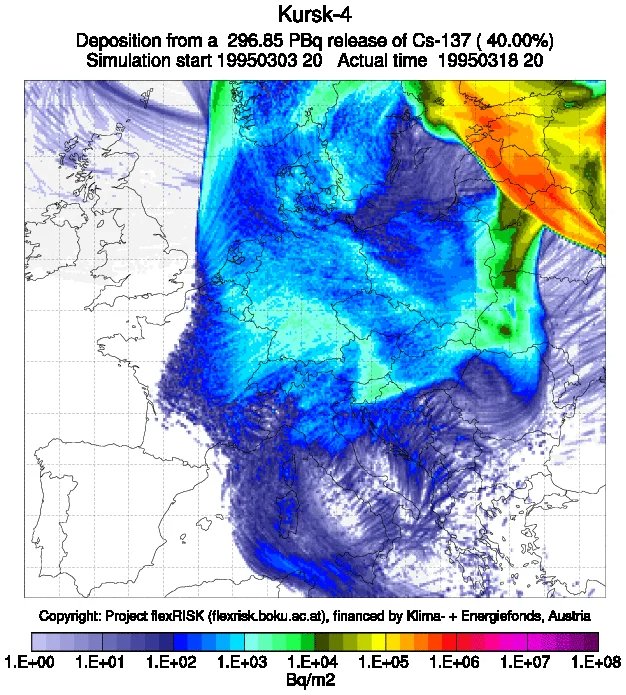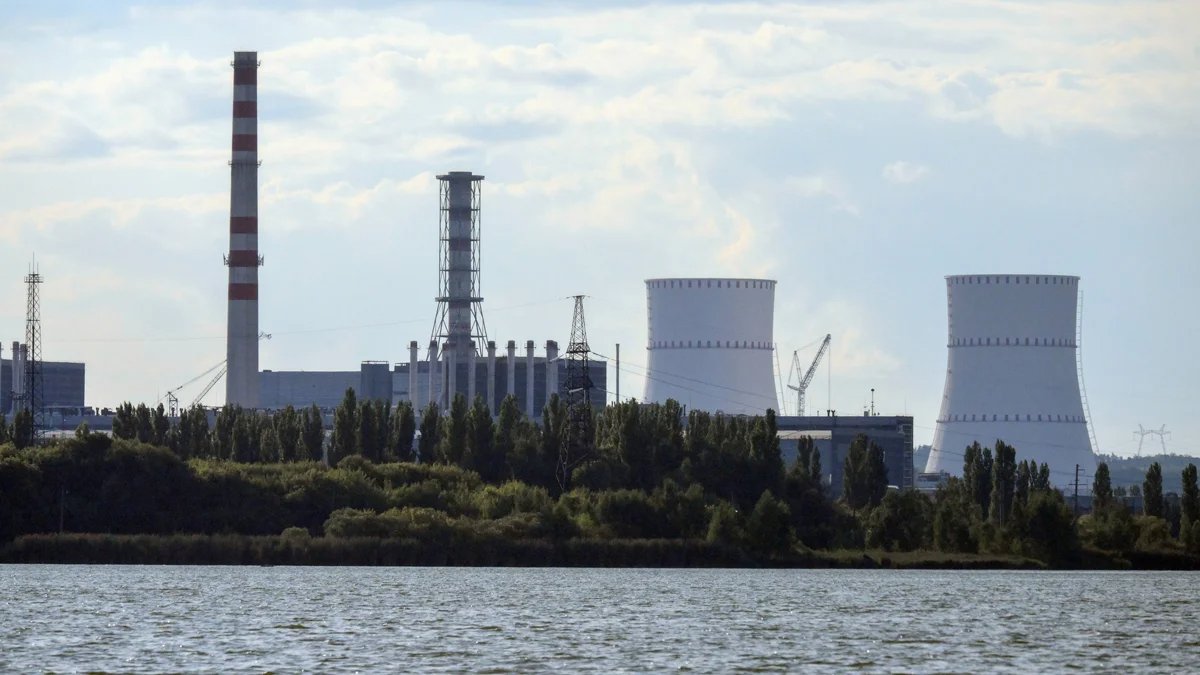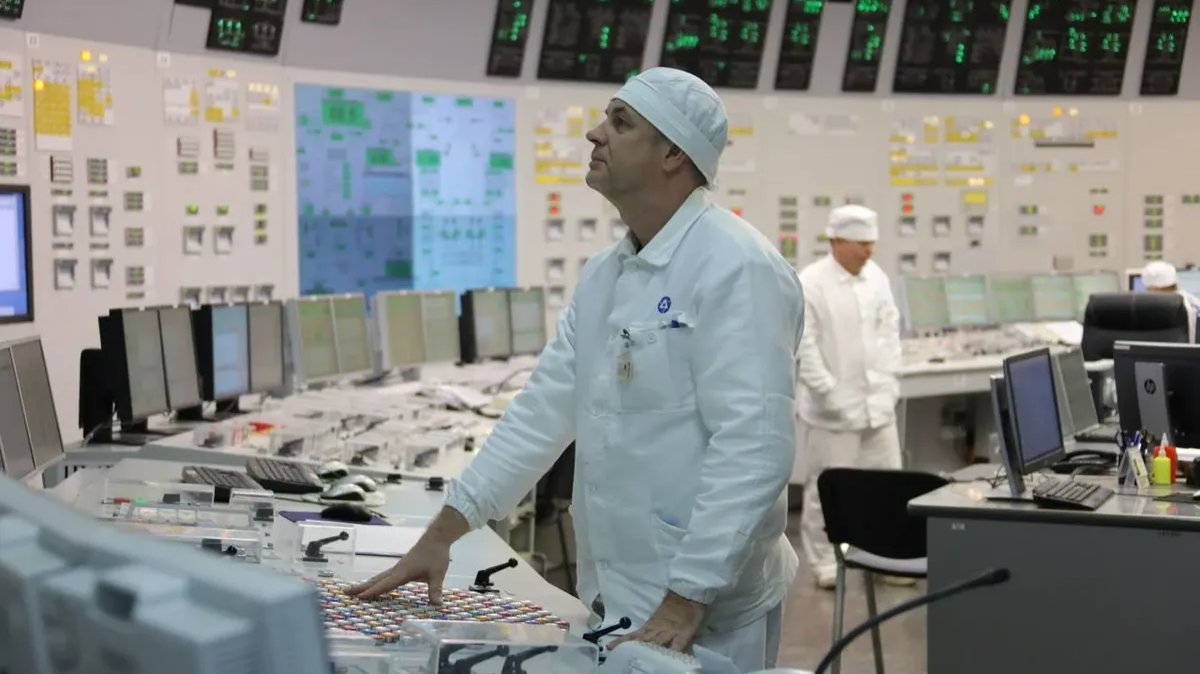As the surprise offensive launched by the Armed Forces of Ukraine (AFU) into Russia’s Kursk region enters its second week, Russia reported to the International Atomic Energy Agency (IAEA) that it had found fragments of downed missiles around the Kursk Nuclear Power Plant, one of Russia’s largest atomic power facilities, and accused Kyiv of “reckless actions” which threaten the entire nuclear power sector.
Chernobyl’s older twin
The Kursk nuclear power plant is one of the four largest in Russia, and accounts for more than half the generating capacity of all the power plants in the Central Black Earth region (comprising the Belgorod, Kursk, Lipetsk, Oryol, Tambov and Voronezh regions) according to Rosatom, Russia’s atomic energy agency. The plant has a total of four power units, of which only two are still generating electricity — units 3 and 4, which between them have a capacity of 2,000 MW.
Externally, and in many ways internally, the Kursk Nuclear Power Plant resembles that of the Chernobyl Nuclear Plant in Ukraine, the site of the largest nuclear disaster in history. Indeed, Kursk uses RMBK-1000 reactors — the type of reactor that went into meltdown at Chernobyl in 1986. These reactors are currently mid-way through decommissioning, which is why units 1 and 2 are no longer operational, having been mothballed in 2021 and earlier this year respectively. A new plant — Kursk II — is currently under construction, and is scheduled to replace the Kursk Nuclear Power Plant in the early 2030s.
Only in Russia
As the AFU continued their offensive into Russia’s Kursk region late last week, IAEA director general Rafael Grossi called on Moscow and Kyiv to exercise maximum restraint to avoid a nuclear accident at the plant.
However, Russian claims that Ukraine has been mounting airstrikes near the plant significantly predate the AFU incursion into the region. Almost a year ago, in early October, Russian Foreign Ministry spokesperson Maria Zakharova claimed that a Ukrainian drone containing explosives had hit a nuclear waste storage facility at the Kursk Nuclear Power Plant.

The RMBK-1000 reactor at the Kursk Nuclear Power Planet. Photo: Rosatom
A missile strike could lead to the destruction of the RBMK-1000 reactor and cause a graphite fire similar to the one behind the Chernobyl reactor meltdown, says physics engineer Andrey Ozharovsky, noting that one of the reactor type’s main shortcomings was their lack of protection from such eventualities.
“These reactors are not covered with any protective shells. They just stand in an ordinary building that could house the workshop of another facility. They have no core melt trap. They are very dangerous old reactors, and Russia is the only country in the world where they are still operating,” Ozharovsky said.
Radioactive emissions from an explosion at the Kursk Nuclear Power Plant would not only contaminate European Russia and neighbouring regions of Ukraine, but, depending on the wind direction, much of Western Europe as well. This is illustrated in a scenario produced by the flexRisk project, which analyses accident scenarios at nuclear power plants worldwide.

One of the scenarios for the spread of contamination in the event of an explosion at the Kursk Nuclear Power Plant. Photo: flexRisk
Shutdown threat
“If the people who gain control of the Kursk Nuclear Power Plant are somehow able to shut down electricity generation, we may see a repeat of the situation when there was an emergency shutdown of a reactor at the Rostov Nuclear Power Plant, which caused a mass blackout and left millions of people without electricity,” Ozharovsky added.
In such a scenario, it would only be possible to restore the energy system by using the reserve and manoeuvring the grid to divert electricity from other regions, Ozharovsky said, adding that this would take time.
“Also we should bear in mind that even if the nuclear plant is not yet directly threatened, the energy system in the south of Russia has already been subjected to quite serious damage. And this may aggravate the situation,” Ozharovsky continued.

The Kursk Nuclear Power Plant. Photo: Ilya Pitalev / Sputnik / Imago Images / Scanpix / LETA
However, a scenario in which the Kursk Nuclear Power Plant is captured by the AFU does not seem to be particularly likely at present. According to reports by independent Russian media outlet Meduza, Ukrainian troops are now located approximately 50 kilometres from the plant, and are no longer advancing.
Instead, as Ruslan Leviev, the co-founder of independent Russian investigative group the Conflict Intelligence Team (CIT) noted, the AFU are now entrenching their positions in the areas of the Kursk region they have occupied, something that may continue for weeks or even months.
On Sunday, a high-ranking Ukrainian official told AFP on condition of anonymity that the AFU could “guarantee” it had no intention of posing a threat to nuclear safety and would “respect international law”, an assurance further reinforced by Ukrainian President Volodymyr Zelensky on Monday, when he told Ukrainians in his nightly address that Ukraine had “always wished only for peace” and would “definitely ensure peace”.
Join us in rebuilding Novaya Gazeta Europe
The Russian government has banned independent media. We were forced to leave our country in order to keep doing our job, telling our readers about what is going on Russia, Ukraine and Europe.
We will continue fighting against warfare and dictatorship. We believe that freedom of speech is the most efficient antidote against tyranny. Support us financially to help us fight for peace and freedom.
By clicking the Support button, you agree to the processing of your personal data.
To cancel a regular donation, please write to [email protected]

